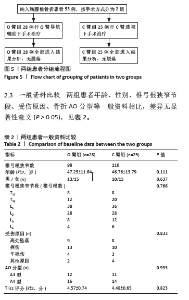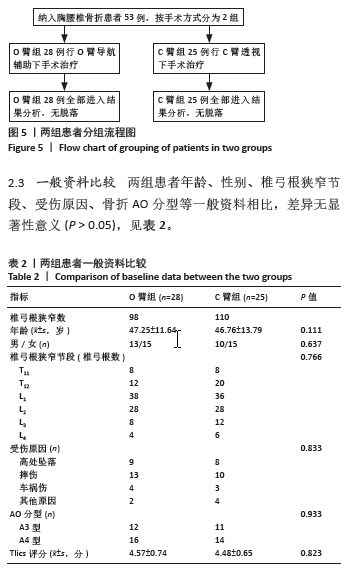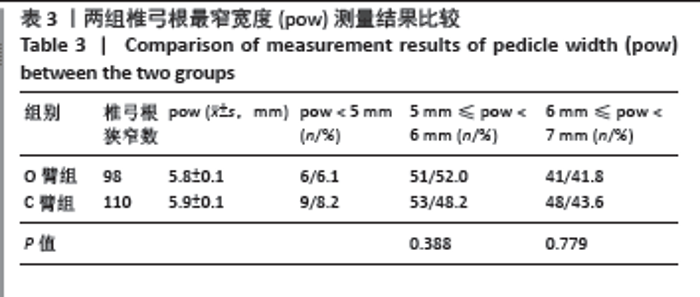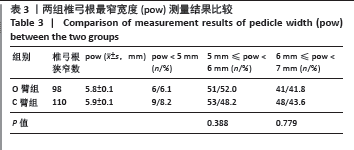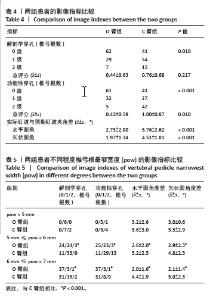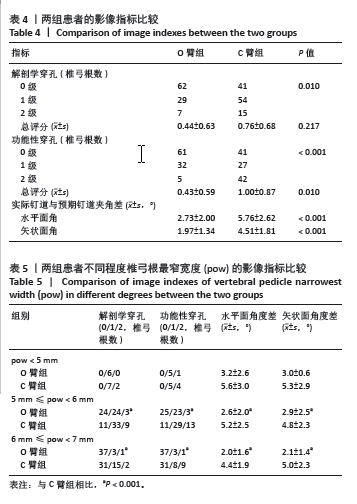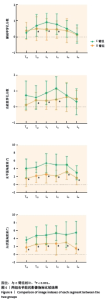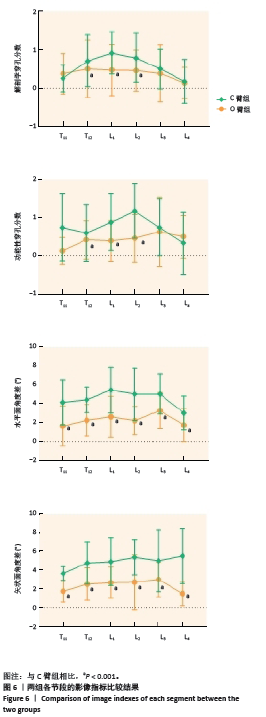Chinese Journal of Tissue Engineering Research ›› 2025, Vol. 29 ›› Issue (9): 1855-1862.doi: 10.12307/2025.156
Previous Articles Next Articles
Precise application of O-arm navigation system in thoracolumbar fractures with developmental pedicle stenosis
Su Lintao1, Jiang Jianfeng1, Ma Jun2, Huang Liangliang2, Lei Changyu1, Han Yaozheng1, Kang Hui2
- 1School of Medicine, Wuhan University of Science and Technology, Wuhan 430000, Hubei Province, China; 2Department of Orthopedics, General Hospital of Central Theater Command of PLA, Wuhan 430000, Hubei Province, China
-
Received:2024-01-04Accepted:2024-03-27Online:2025-03-28Published:2024-10-10 -
Contact:Kang Hui, MD, Associate professor, Department of Orthopedics, General Hospital of Central Theater Command of PLA, Wuhan 430000, Hubei Province, China -
About author:Su Lintao, Master candidate, School of Medicine, Wuhan University of Science and Technology, Wuhan 430000, Hubei Province, China -
Supported by:Hubei Province Medical Youth Top Talents Project, No. (2019)48 (to KH); Hubei Provincial Health Commission General Research Project, No. WJ2023M091 (to KH); Wuhan Young and Middle aged Medical Backbone Talent Training Project, No. (2017)51 (to KH)
CLC Number:
Cite this article
Su Lintao, Jiang Jianfeng, Ma Jun, Huang Liangliang, Lei Changyu, Han Yaozheng, Kang Hui. Precise application of O-arm navigation system in thoracolumbar fractures with developmental pedicle stenosis[J]. Chinese Journal of Tissue Engineering Research, 2025, 29(9): 1855-1862.
share this article
Add to citation manager EndNote|Reference Manager|ProCite|BibTeX|RefWorks
| [1] 徐峰,康辉,魏坦军,等. 椎弓根螺钉不同固定方法治疗胸腰椎骨折的生物力学分析 [J]. 中国组织工程研究,2021,25(9):1313-1317. [2] PHAN K, RAO PJ, MOBBS RJ. Percutaneous versus open pedicle screw fixation for treatment of thoracolumbar fractures: Systematic review and meta-analysis of comparative studies. Clin Neurol Neurosurg. 2015;135:85-92. [3] CORIC D, ROSSI VJ, PELOZA J, et al. Percutaneous, Navigated Minimally Invasive Posterior Cervical Pedicle Screw Fixation. Int J Spine Surg. 2020;14(3):14-21. [4] GAZZERI R. Percutaneous Pedicle Screw Fixation Technique in the Thoracic and Lumbar Spine-Tips and Tricks. Surg Technol Int. 2016; 28(2):303-310. [5] LU J, CHEN Y, HU M, et al. Systematic review and meta-analysis of the effect of using percutaneous pedicle screw internal fixation for thoracolumbar fractures. Ann Palliat Med. 2022;11(1):250-259. [6] ESSES SI, SACHS BL, DREYZIN V. Complications Associated with the Technique of Pedicle Screw Fixation A Selected Survey of ABS Members. Spine. 1993;18(15):2231-2239. [7] MOBBS RJ, SIVABALAN P, LI J. Technique, challenges and indications for percutaneous pedicle screw fixation. J Clin Neurosci. 2011;18(6): 741-749. [8] 戚力升, 谢明忠, 李森. 胸腰段脊柱椎弓根形态及相关因素分析[J]. 中国骨科临床与基础研究杂志,2017,9(3):175-181. [9] FENG W, WANG W, CHEN S, et al. O-arm navigation versus C-arm guidance for pedicle screw placement in spine surgery: a systematic review and meta-analysis. Int Orthop. 2020;44(5):919-296. [10] DELCONT MR, OU-YANG DC, BURGER EL, et al. Alternative Uses of O-Arm and Stealth Navigation Technology Over 10 Years: The University of Colorado Experience. Orthopedics. 2023;46(2):e89-e97. [11] 康辉, 徐峰, 席金涛, 等. 经皮伤椎置入万向椎弓根螺钉治疗胸腰椎骨折 [J]. 中国矫形外科杂志,2019,27(20):1831-1835. [12] XU P, LIN J, XIAO H, et al. Feasibility of C2 Pedicle Screw Fixation with the “in-out-in” Technique for Patients with Basilar Invagination. Spine. 2023. doi:10.1097/BRS.000000000000004757. [13] 凌宸, 刘臻, 毛赛虎, 等. O型臂联合CT三维导航系统辅助颈椎椎弓根螺钉置入的准确性研究[J]. 中国脊柱脊髓杂志,2022,32(3): 207-213. [14] ORIEF T, ALFAWAREH M, HALAWANI M, et al. Accuracy of percutaneous pedicle screw insertion in spinal fixation of traumatic thoracic and lumbar spine fractures. Surg Neurol Int. 2018;9:78. [15] BOON TOW BP, YUE WM, SRIVASTAVA A, et al. Does Navigation Improve Accuracy of Placement of Pedicle Screws in Single-level Lumbar Degenerative Spondylolisthesis: A Comparison Between Free-hand and Three-dimensional O-Arm Navigation Techniques. J Spinal Disord Tech. 2015;28(8):E472-E477. [16] VIJAYAN R, DE SILVA T, HAN R, et al. Automatic pedicle screw planning using atlas-based registration of anatomy and reference trajectories. Phys Med Biol, 2019;64(16):165020. [17] 邹守平, 卢道云, 叶力. 微创经皮伤椎置钉治疗胸腰椎骨折:6个月随访脊柱生物力学变化 [J]. 中国组织工程研究,2021,25(24): 3865-3869. [18] ZHENG Z, ZHANG L, ZHU Y, et al. Percutaneous cortical bone trajectory screw fixation versus traditional open pedicle screw fixation for type A thoracolumbar fractures without neurological deficit. J Robot Surg. 2023; 17(1): 233-241. [19] JESWANI S, DRAZIN D, HSIEH JC, et al. Instrumenting the small thoracic pedicle: the role of intraoperative computed tomography image-guided surgery. Neurosurg Focus. 2014; 36(3): E6. [20] SOLITRO GF, WHITLOCK K, AMIROUCHE F, et al. Currently Adopted Criteria for Pedicle Screw Diameter Selection. Int J Spine Surg. 2019; 13(2):132-145. [21] 刘旭, 张进. CT及三维重建在胸腰椎骨折患者椎弓根宽度测量研究中的应用[J]. 实用骨科杂志,2019,25(7):607-610. [22] POOLMAN AM, WESSELS Q, SCHOOR AV, et al. Thoracolumbar transitional vertebrae: Quantitative differentiation and associated numeric variation in the vertebral column using skeletal remains. J Anat. 2023;243(2):311-318. [23] PRIYA A, NARAYAN RK, GHOSH SK, et al. Analysing lumbar pedicle morphometry observed via traditional and recent modalities. J Orthop. 2023;43:17-24. [24] PETRONE B, ALBANO J, STOCKTON R, et al. Demographic Analysis of Pedicle Diameter, and Estimated Pedicle Screw Length of the Lumbar Spine in a Diverse Population. Int J Spine Surg. 2021;15(2):259-265. [25] MORITA K, OHASHI H, KAWAMURA D, et al. Thoracic and lumbar spine pedicle morphology in Japanese patients. Surg Radiol Anat. 2021;43(6): 833-842. [26] ZHAO Q, ZHANG H, HAO D, et al. Complications of percutaneous pedicle screw fixation in treating thoracolumbar and lumbar fracture. Medicine. 2018;97(29):e11560. [27] 曾红生, 陈子华, 陈建威, 等. 经伤椎椎弓根螺钉置入内固定修复胸腰椎骨折:远期效果及生物力学分析 [J]. 中国组织工程研究, 2016,20(4):571-576. [28] PERDOMO-PANTOJA A, ISHIDA W, ZYGOURAKIS C, et al. Accuracy of Current Techniques for Placement of Pedicle Screws in the Spine: A Comprehensive Systematic Review and Meta-Analysis of 51,161 Screws. World Neurosurg. 2019;126:664-678. [29] WANG H, ZHENG B, GU H, et al. O-Arm- and Guide-Device-Assisted Personalized Percutaneous Kyphoplasty for Thoracolumbar Osteoporotic Vertebral Compression Fractures. J Pers Med. 2023;13(4):595. [30] LU YJ, MIAO YM, ZHU TF, et al. Comparison of the Wiltse Approach and Percutaneous Pedicle Screw Fixation Under O-arm Navigation for the Treatment of Thoracolumbar Fractures. Orthop Surg. 2021;13(5): 1618-1627. [31] LU J, CHEN W, LIU H, et al. Does Pedicle Screw Fixation Assisted by O-Arm Navigation Perform Better Than Fluoroscopy-guided Technique in Thoracolumbar Fractures in Percutaneous Surgery?: A Retrospective Cohort Study. Clin Spine Surg. 2020;33(6):247-253. [32] ASAMOTO S, KOJIMA K, WINKING M, et al. Optimized Screw Trajectory for Lumbar Cortical Bone Trajectory Pedicle Screws Based on Clinical Outcome: Evidence Favoring the Buttress Effect Theory. J Neurol Surg A Cent Eur Neurosurg. 2018;79(6):464-470. [33] LEE KY, KIM MW, SEOK SY, et al. The Relationship between Superior Disc-Endplate Complex Injury and Correction Loss in Young Adult Patients with Thoracolumbar Stable Burst Fracture. Clin Orthop Surg. 2017;9(4):465-471. [34] MANBACHI A, COBBOLD RS, GINSBERG HJ. Guided pedicle screw insertion: techniques and training. Spine J. 2014;14(1): 165-179. [35] MATSUKAWA K, YATO Y, IMABAYASHI H. Impact of Screw Diameter and Length on Pedicle Screw Fixation Strength in Osteoporotic Vertebrae: A Finite Element Analysis. Asian Spine J. 2021;15(5): 566-574. [36] 陆声榆, 沙轲, 陆彩玲, 等. O臂导航在骶髂螺钉置钉中的应用[J]. 广西医科大学学报,2021,38(12):2352-2356. [37] ZHAO J, JIANG H, ZHUGE Y, et al. Risk Factors for the Drift Phenomenon in O-arm Navigation-Assisted Pedicle Screw Placement during Spinal Deformity Surgery. Orthop Surg. 2023;15(1):118-123. [38] MATHEW JE, MOK K, GOULET B. Pedicle violation and Navigational errors in pedicle screw insertion using the intraoperative O-arm: A preliminary report. Int J Spine Surg. 2013;7:e88-e94. [39] CROCI DM, NGUYEN S, STREITMATTER SW, et al. O-Arm Accuracy and Radiation Exposure in Adult Deformity Surgery. World Neurosurg. 2023;171:e440-e446. [40] YOKOTA K, KAWANO O, SAKAI H, et al. Intraoperative Radiation Exposure from O-arm-based 3D Navigation in Spine Surgery. Spine Surg Relat Res. 2023;7(6):496-503. [41] CRAWFORD BD, NCHAKO CM, REBEHN KA, et al. Transpedicular Screw Placement Accuracy Using the O-Arm Versus Freehand Technique at a Single Institution. Global Spine J. 2022;12(3):447-451. |
| [1] | Zhang Hao, Wang Qing, Zhang Jian, Li Guangzhou, Wang Gaoju. Comparison of posterior C2-3 fixation combined with bucking bar technique and posterior C2-3 fixation alone in treatment of unstable Hangman fractures [J]. Chinese Journal of Tissue Engineering Research, 2025, 29(9): 1848-1854. |
| [2] | Gao Zhenyang, Zeng Xiuan, Yang Qibing, Kou Xianshuai, Wang Kejing, Li Meng. Computer-simulated repositioning combined with pelvic reduction frame for treatment of anteroposterior compression-III pelvic fractures [J]. Chinese Journal of Tissue Engineering Research, 2025, 29(9): 1870-1875. |
| [3] | Chen Xi, Tang Tao, Chen Tongbing, Li Qing, Zhang Wen. Mechanical stability of intertrochanteric fracture of femur with different internal fixation systems [J]. Chinese Journal of Tissue Engineering Research, 2025, 29(9): 1783-1788. |
| [4] | Huang Haobo, Liang Xinyuan, Ye Guozhong, Xie Qingxiang, Su Boyuan. Suture tape and headless compression screws in treatment of Lisfranc injury with comminuted fractures of the first and second proximal metatarsal bones [J]. Chinese Journal of Tissue Engineering Research, 2025, 29(9): 1803-1809. |
| [5] | Yu Ming, Wang Wen. Posterior cruciate ligament tibial attachment point avulsion fracture: materials, implants, and internal fixation techniques in arthroscopic treatment [J]. Chinese Journal of Tissue Engineering Research, 2025, 29(4): 872-880. |
| [6] | Sheng Wenbo, Liu Bingli, Li Sibo, Ao Rongguang, Yu Baoqing. Cement-augmented short-segment percutaneous pedicle screw fixation for the stage II Kümmell’s disease [J]. Chinese Journal of Tissue Engineering Research, 2025, 29(34): 7286-7292. |
| [7] | Wang Lei, Li Chengsong, Zhang Shenshen, Wang Qing. Finite element analysis of biomechanical characteristics of three internal fixation methods in treatment of inferior patellar fracture [J]. Chinese Journal of Tissue Engineering Research, 2025, 29(33): 7048-7054. |
| [8] | Xu Xin, Wurikaixi·Aiyiti, Lyu Gang, Maimaiaili·Yushan, Ma Zhiqiang, Ma Chao. Finite element analysis of four different internal fixation methods for complex acetabular double-column fractures [J]. Chinese Journal of Tissue Engineering Research, 2025, 29(33): 7063-7071. |
| [9] | Ma Shuangshuang, Gao Dedong, Shan Zhongshu, Xu Wenxu, Lu Zhirui. Finite element analysis and biomechanical validation of revision pedicle screw placement [J]. Chinese Journal of Tissue Engineering Research, 2025, 29(33): 7087-7095. |
| [10] | Hu Chaoran, Cen Chaode, Yang Yang, Zhou Cheng, Huang Huaxian, Yuan Honghao, Luo Qin, Cao Yongfei. 3D printing assisted minimal invasive plate osteosynthesis versus intramedullary nail for treatment of AO12-C middle-proximal humeral fractures [J]. Chinese Journal of Tissue Engineering Research, 2025, 29(33): 7116-7122. |
| [11] | Yang Wanzhong, Ma Rong, Guo Wei, Wang Zhiqiang, Yang Wei, Chen Zhen, Wang Zemin, Zhang Honglai, Ge Zhaohui. One-stage posterior hemivertebra resection and pedicle screw fixation in treatment of congenital scoliosis: a 2-year follow-up of correction effect [J]. Chinese Journal of Tissue Engineering Research, 2025, 29(33): 7173-7180. |
| [12] | Hu Liuchao, Luo Yiwen, Wu Zhifang. Fracture line map characteristics of distal radius fractures involving dorsal articular surface: effective fixation with screws for postoperative displacement [J]. Chinese Journal of Tissue Engineering Research, 2025, 29(3): 524-530. |
| [13] | Liu Xiaoyin, Zhang Jianqun, Chen Zhen, Liang Simin, Wang Zhiqiang, Ma Zongjun, Ma Rong, Ge Zhaohui. Short-term efficacy of oblique lateral interbody fusion combined with lateral plate fixation in treatment of single-level lumbar degenerative disease [J]. Chinese Journal of Tissue Engineering Research, 2025, 29(3): 531-537. |
| [14] | Li Zhenggang, Shang Xuehong, Wu Zhang, Li Hong, Sun Chaojun, Chen Huadong, Sun Zhe, Yang Yi. Finite element analysis of three internal fixation modalities for treatment of Pauwels type III femoral neck fractures under different loading conditions [J]. Chinese Journal of Tissue Engineering Research, 2025, 29(3): 455-463. |
| [15] | Tu Zesong, Xu Daxing, Luo Hongbin, Wang Yusheng, Feng Xinglun, Peng Zhonghua, Du Shaolong. Construction of a risk prediction model for failure of proximal femoral nail antirotation fixation in intertrochanteric fractures [J]. Chinese Journal of Tissue Engineering Research, 2025, 29(27): 5845-5853. |
| Viewed | ||||||
|
Full text |
|
|||||
|
Abstract |
|
|||||
